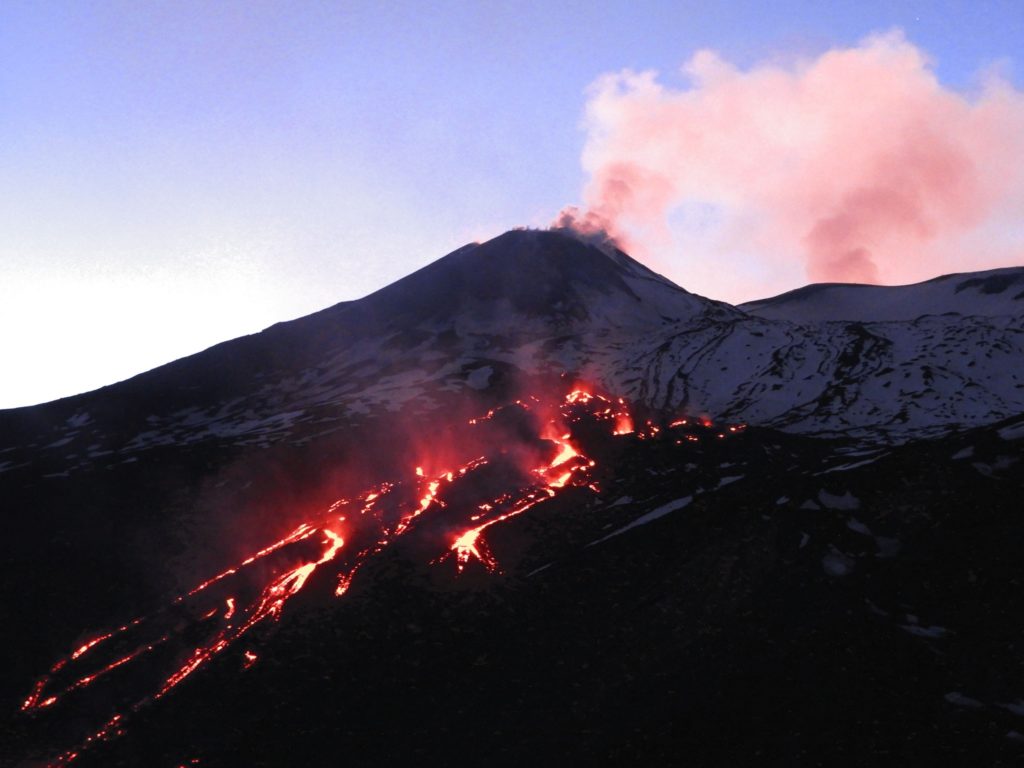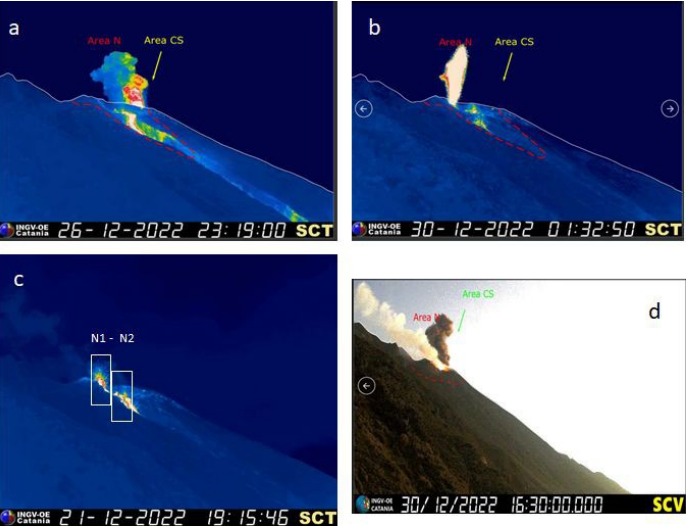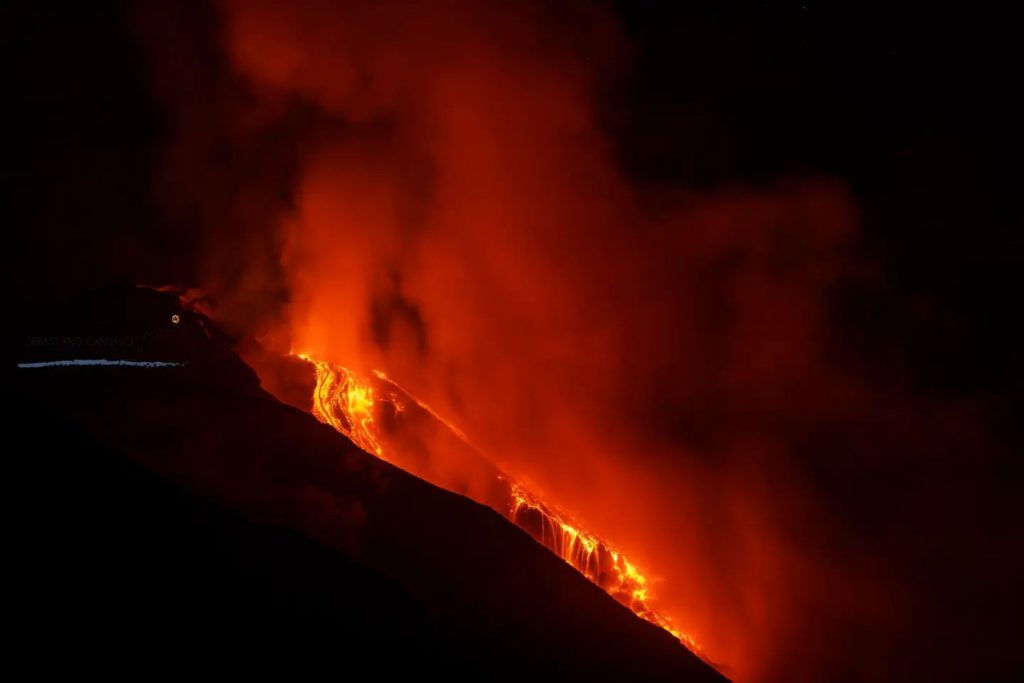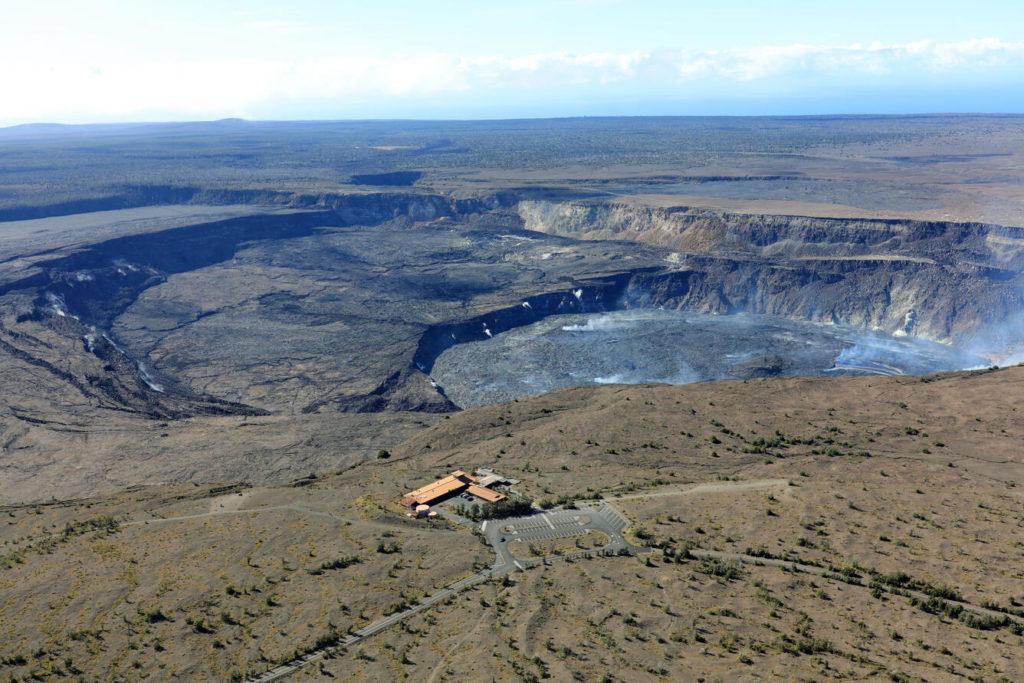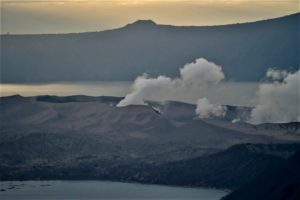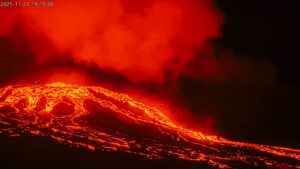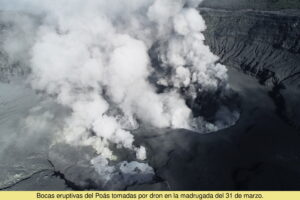January 04 , 2023 .
Italy / Sicily , Etna :
WEEKLY BULLETIN, from December 26, 2022 to January 01, 2023. (issue date 03 January 2023)
ACTIVITY STATUS SUMMARY
In the light of the monitoring data, it is highlighted:
1) VOLCANOLOGICAL OBSERVATIONS: Effusive activity with lava flows in the Vallée del Leone, degassing at variable speed at the level of the summit craters.
2) SEISMOLOGY: Modest seismic activity due to fracturing; average amplitude of tremors at average levels; location of sources near the Southeast crater.
3) INFRASOUND: Low infrasound activity; localized springs were located in the Bocca Nuova crater area.
4) GROUND DEFORMATIONS: During the last week, the ground deformation monitoring networks have not recorded any significant variations. At the scale of the volcano there is a slight deflationary trend.
Map of the lava field updated on December 30, 2022, made by analyzing Sentinel satellite images from December 28 and 30. The background image is the shaded model of the relief of the summit area of Etna, obtained by processing drone images acquired during several overflights (September 15 and 21, 2022, October 6, 21 and 23), superimposed on the shaded model derived from Pléiades images of August 22, 2020 (AO Remote Sensing). CSE = Southeast Crater.
5) GEOCHEMISTRY: SO2 flux at an average level.
The soil CO2 flux values recorded last week are average values.
The CO2 of the water table (EtnaAcque Network) presents variations which are part of the seasonal variability of the site.
Helium isotopes (discrete sampling): there are no updates.
6) SATELLITE OBSERVATIONS: The thermal activity observed by satellite in the summit zone was of a high level in correspondence with the effusive eruption in the summit zone.
VOLCANOLOGICAL OBSERVATIONS
During the week of observation, the monitoring of the volcanic activity of Etna was carried out by analyzing the images of the network of surveillance cameras of the INGV, Osservatorio Etneo and by means of inspections carried out by the personnel of the INGV-OE and by the volcanological guides on 31/12/2022 and 01/01/2023.
During the observation period, the effusive activity that began on November 27 continued from the effusive mouth that opened at the northeast base of the Southeast crater at an altitude of about 2800 m. Similar to the previous weeks, the activity showed a variable, sometimes impulsive effusive regime, which determined the development of a lava field characterized by the overlapping of different lava flows with expansion in the Valle del Leone and the Valle del Bove. From the integration of thermal images from INGV-OE surveillance cameras and Sentinel-2 L2A satellite images (Sentinel Hub ESA), it was observed that the most advanced lava front on December 30 was at an altitude of about 2200 m. The volume of lava that has been emitted so far has been estimated at around 1 million m3.
Inspections carried out have found that the lava field is very complex and frayed, with lava flows that tend to form, slowing their speed and with the formation of various channels.
With regard to the summit craters, the activity was characterized by a variable rate degassing mainly affecting the Bocca Nuova crater.
Source : INGV.
Photos : INGV , Boris Behncke.
Italy , Stromboli :
WEEKLY BULLETIN, from December 26, 2022 to January 01, 2023. (issue date 03 January 2023)
ACTIVITY STATUS SUMMARY
In the light of the monitoring data, it is highlighted:
1) VOLCANOLOGICAL OBSERVATIONS: Ordinary Strombolian explosive activity and localized spattering in the northern zone of the crater terrace, and effusive activity from the lava overflow of the northern zone of the crater. Total hourly frequency of explosive activity at a medium-low level.
2) SEISMOLOGY: The seismological parameters do not show significant variations.
3) SOIL DEFORMATIONS: The island’s soil deformation monitoring networks did not show any significant variation to report for the period considered.
4) GEOCHEMISTRY: The flow of SO2 at an average level.
CO2 flux in the crater area: there are no updates; the latest measurements from 10.12.2022 show a downward trend while remaining on medium-high values.
CO2/SO2 ratio: the CO2/SO2 ratio displays high values, equal to 18.37 (data validated on 01.01.2023).
Isotope ratio of dissolved Helium in heat sinks: there are no updates.
5) SATELLITE OBSERVATIONS: The thermal activity observed from the satellite was generally weak. High heat flux values were observed on December 27 and 28, 2022 in correspondence with the lava overflow in the summit area.
Images taken by the INGV-OE surveillance cameras placed at an altitude of 190m show the explosive activity produced by the Center-South zone and the North zone (respectively a, d and b). In c the active outlets of the northern zone, the N1 and three of the N2
VOLCANOLOGICAL OBSERVATIONS
During the observation period, the eruptive activity of Stromboli was characterized by the analysis of the images recorded by the INGV-OE surveillance cameras at an altitude of 190 m (SCT-SCV) and Punta dei Corvi. At the moment, the video signals from the 400m and Pizzo video cameras are not available following the damage of the optical fiber for data transmission, due to the bad weather that hit the island on August 12, 2022. During During the period, explosive activity was mainly produced by 4 eruptive vents located in the North zone of the crater (N) and by 1 vent located in the Center-South zone (CS). Following the eruptive activity from December 4 to 9, 2022 which produced the collapse of the North zone of the crater terrace and to a lesser extent of the Center-South one, the vents of the N zone are located in the upper part of the Sciara del Fuoco.
During the analyzed period, the northern area of the crater showed explosive activity emitting coarse materials (bombs and lapilli) with an average/hourly frequency of explosions at a low level and between 1 and 5 events/h. From the two vents N1 and N2, intense projection activity was observed at variable regimes and interspersed with phases without activity. In the Center-South (CS) zone, the explosive activity was also at a low level and the component of the explosions produced was mainly represented by fine materials (ash). Overall, the hourly frequency of total explosive activity was placed at a medium-low level.
Effusive activity:
The ninth effusive lava overflow event produced by the North Crater area since October 2022 occurred between December 26 and 28. Among these events, that of December 26-28 is among the most important for its duration of about 37 hours and for the extension of the lava front on the Sciara del Fuoco to an altitude of about 400 meters above sea level. Like the other effusive events that occurred during these months, the eruptive phenomenon was preceded by intense spattering activity from the N1 vent which gradually intensified until it overflowed of lava. Effusive activity began around 20:13 UTC on December 26 and ended at around 08:30 UTC on December 28, characterized by a variable and impulsive effusive regime. The lava flow was mainly fed by the N1 vent with a secondary contribution in the final phase of the effusive event, also by part of the N2 vents between 05:05 and 07:12 UTC.
Communication on Stromboli activity, 03 January 2023, 17:03 (16:03 UTC)
The National Institute of Geophysics and Volcanology, Osservatorio Etneo, communicates that from the analysis of the images of the surveillance cameras, it is observed that since this afternoon, the feeding of the lava flow described in the press release previous press has gradually diminished and for the moment the lava flow is cooling. Ordinary explosive activity coupled with spatter activity continues in the North Crater area; during the observation period, no activity was detected in the area of the Center-South crater.
During the last 24 hours, the average amplitude of the volcanic tremor did not show significant variations remaining within the range of average values. The GNSS network shows no significant changes from the previous version.
Further updates will be communicated soon
Source : INGV.
Photos : INGV , Sebastiano Cannavo / Stromboli stati d’animo.
Colombia , Puracé / Los Coconucos volcanic chain :
Weekly bulletin of activity of the Puracé volcano – Volcanic chain of Los Coconucos:
The activity level of the volcano continues at the yellow Activity Level or (III): changes in the behavior of volcanic activity.
From the analysis and evaluation of the information obtained through the monitoring network of the Puracé volcano – Los Coconucos volcanic chain, during the week of December 20 to 26, 2022, the COLOMBIAN GEOLOGICAL SERVICE – Volcanological and Seismological Observatory of Popayán reports that:
During the week, 557 seismic events were recorded, of which 102 were associated with rock fracturing processes (VT type) and 455 with fluid dynamics in volcanic conduits, showing stability compared to the previous week.
The geodetic network of GNSS (Global Navigation Satellite System) stations monitoring ground deformation continues to record a process associated with inflation.
By monitoring the surface activity with the images obtained during the week through the Mina, Lavas Rojas, Cerro Sombrero and Curiquinga and Anambío web cameras, a degassing of the volcanic system was highlighted, with a white column preferentially oriented to the northwest.
Regarding the monitoring of volcanic gases, sulfur dioxide (SO2) measurements continue to show changes with a maximum flow of 2932 t / day for the week evaluated. Other instruments measuring the concentration of carbon dioxide (CO2) and radon gas (222Rn) continue to record high values in the known setting for this active volcanic system.
Electromagnetic field and infrasound wave monitoring sensors did not record variations associated with changes in volcanic activity.
It is then concluded that variations in volcanic activity continue to be recorded, in line with the behavior expected in a level of activity III (yellow level), which could evolve towards states of greater activity.
Source et photo : SGC.
Hawaii , Kilauea :
19°25’16 » N 155°17’13 » W,
Summit Elevation 4091 ft (1247 m)
Current Volcano Alert Level: ADVISORY
Current Aviation Color Code: YELLOW
Activity Summary:
Kīlauea volcano is not erupting. All recent eruptive activity within Halemaʻumaʻu crater has ceased. Seismic activity is variable, with occasional periods of heightened seismicity beneath and surrounding the crater. No other significant changes have been observed at the summit or in either rift zone.
Summit Observations:
This past week saw variable seismic activity in the Kīlauea summit region. There have been occasional periods of heightened seismicity beneath and surrounding Halemaʻumaʻu crater, including a small earthquake swarm in the evening of December 30, 2022. Another small swarm began late yesterday evening, January 2, 2023, and has continued into this morning. A M4.0 earthquake north of the summit region at 3:31 a.m. this morning did not have any obvious effect on volcanic unrest. Volcanic tremor remains weak to nonexistent.
Summit tiltmeters tracked several multi-day deflation-inflation (DI) events over the past week, which have decreased in magnitude compared to earlier DI events. Over longer timescales, summit tiltmeters and GPS continue to show long-term inflationary trends. Gas emissions from the summit remain low; a sulfur dioxide (SO2) emission rate of approximately 150 tonnes per day (t/d) was measured on December 28, 2022.
Halemaʻumaʻu Lava Lake Observations:
Lava is no longer erupting from the western vent into the lava lake on Halemaʻumaʻu crater floor. The lava lake surface has cooled to form a dark crust. There has been no crustal overturn, and only one small source of incandescense—in the center of the crater floor—remains weakly visible in nighttime webcam views. Measured last on December 29, 2022, the total cumulative rise of the crater floor has been about 144 meters (472 feet), and 112 million cubic meters (29.5 billion gallons) of lava had been effused since the beginning of the latest eruption on September 29, 2021.
East Rift Zone Observations:
No unusual activity has been noted along the East Rift Zone or Southwest Rift Zone; steady rates of ground deformation and seismicity continue along both. Measurements from continuous gas monitoring stations downwind of Puʻuʻōʻō in the middle East Rift Zone remain below detection limits for SO2, indicating that SO2 emissions from Puʻuʻōʻō are negligible.
Source : HVO
Photo : USGS / F. Mulliken
Mexico , Popocatepetl :
January 3, 11:30 a.m. (January 3, 5:30 p.m. GMT)
During the past 24 hours, according to the monitoring systems of the Popocatépetl volcano, 132 exhalations accompanied by water vapor, volcanic gases and slight amounts of ash have been detected, as well as five minor explosions.
In the same period, 52 minutes of low amplitude tremors were recorded, of which 21 were of the harmonic type.
During this morning, a slight constant emission of water vapor and gas was observed in an East-North-East (ENE) direction, for the moment there is good visibility towards the crater.
CENAPRED insistently reiterates the recommendation not to climb to the crater of the volcano because there is a possibility of explosions, as has been seen on several occasions in the past, which involve the emission of incandescent fragments and in the event of strong rains, stay away from the bottom of ravines due to the danger of mudslides and debris.
The Popocatépetl Volcanic Warning Light is in YELLOW PHASE 2.
Source et photo : Cenapred.



